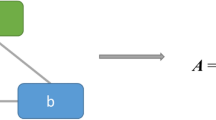Abstract
There are many industries that use highly technological solutions to improve quality in all of their products. The steel industry is one example. Several automatic surface-inspection systems are used in the steel industry to identify various types of defects and to help operators decide whether to accept, reroute, or downgrade the material, subject to the assessment process. This paper focuses on promoting a strategy that considers all defects in an integrated fashion. It does this by managing the uncertainty about the exact position of a defect due to different process conditions by means of Gaussian additive influence functions. The relevance of the approach is in making possible consistency and reliability between surface inspection systems. The results obtained are an increase in confidence in the automatic inspection system and an ability to introduce improved prediction and advanced routing models. The prediction is provided to technical operators to help them in their decision-making process. It shows the increase in improvement gained by reducing the 40 % of coils that are downgraded at the hot strip mill because of specific defects. In addition, this technology facilitates an increase of 50 % in the accuracy of the estimate of defect survival after the cleaning facility in comparison to the former approach. The proposed technology is implemented by means of software-based, multi-agent solutions. It makes possible the independent treatment of information, presentation, quality analysis, and other relevant functions.
Similar content being viewed by others
References
Abellán-Nebot J, Romero Subirón F, Serrano Mira J (2012) Manufacturing variation models in multi-station machining systems. Int J Adv Manuf Technol 1–21. doi:10.1007/s00170-012-4016-4
Ameri F, McArthur C (2012) A multi-agent system for autonomous supply chain configuration. Int J Adv Manuf Technol 1–16. doi:10.1007/s00170-012-4392-9
Bishop C (2005) Pattern recognition and machine learning. Springer
Bolt PH (2004) Understanding the properties of oxide scales on hot rolled steel strip. Steel Res Int 75(6):399–404
Giaquinto A, Fornarelli G, Brunetti G, Acciani G (2009) A neurofuzzy method for the evaluation of soldering global quality index. IEEE Trans Ind Inf 5(1):56–66
González-Aranda P, Menasalvas E, Millán S, Ruiz C, Segovia J (2008) Towards a methodology for data mining project development: the importance of abstraction. In: Lin T, Xie Y, Wasilewska A, Liau CJ (eds) Data mining: foundations and practice, studies in computational intelligence, vol 118. Springer Berlin / Heidelberg, pp 165–178
Henry D, Permane P, Dubuisson Y (1992) Artificial vision. detection and filling of surface defects on pickled sheet. Rev Métall 89(7–8):645–654
Jämsä-Jounela SL, Tikkala VM, Zakharov A, Pozo Garcia O, Laavi H, Myller T, Kulomaa T, Hämäläinen V (2012) Outline of a fault diagnosis system for a large-scale board machine. Int J Adv Manuf Technol 1–15. doi:10.1007/s00170-012-4296-8
Jeong H, Lee JS, Bae SM (2011) Defect detection and localization in plates using a lamb wave time reversal technique. Int J Precis Eng Manuf 12:427–434. doi:10.1007/s12541-011-0055-2
Kang GW, Liu HB (2005) Surface defects inspection of cold rolled strips based on neural network. In: Proceedings of 2005 international conference on machine learning and cybernetics, vol 8, pp 5034–5037
Lacasse L, Tahan A, Liu Z (2008) Robust method for the automatic characterization of a wooden board’s geometrical state. Qual Eng 20(2):221–231. doi:10.1080/08982110701733042
Levy R, Chen W, Lyell M (2009) Software agent-based framework supporting autonomous and collaborative sensor utilization (aamsrt). In: Eighth international conference on autonomous agents and multiagent systems. Budapest, Hungary 10–15 May 2009
Masood I, Hassan A (2012) Pattern recognition for bivariate process mean shifts using feature-based artificial neural network. Int J Adv Manuf Technol 1–18. doi:10.1007/s00170-012-4399-2
Mosqueira-Rey E, Alonso-Betanzos A, Guijarro-Berdinas B, Alonso-Rios D, Lago-Pineiro J (2009) A snort-based agent for a JADE multi-agent intrusion detection system. Int J Intell Inf Database Syst 3(1):107–121
Omicini A, Ricci A, Viroli M (2008) Artifacts in the A&A meta-model for multi-agent systems. Auton Agent Multi-Agent Sys 17(3):432–456
Ordieres-Meré J, de Pisón-Ascacibar FJM, González-Marcos A, Ortiz-Marcos I (2010) Comparison of models created for the prediction of the mechanical properties of galvanized steel coils. J Intell Manuf 21(4):403–421
Ordieres-Meré JB, González-Marcos A, González JA, Lobato-Rubio V (2004) Estimation of mechanical properties of steel strips in hot dip galvanizing lines. Ironmak Steelmak 31(1):43–50
Pernía-Espinoza A, Castejón-Limas M, González-Marcos A, Lobato-Rubio V (2005) Steel annealing furnace robust neural network model. Ironmak Steelmak 32(5):418–426
Schökopf B, Smola A (2001) Learning with kernels: support vector machines, regularization, optimization, and beyond. The MIT
Sun H, Xu K, Xu JW (2003) Online application of automatic surface quality inspection system to finishing line of cold rolled strips. J Univ Sci Technol Beijing 10(4):38–41
Tosic M, Zaslavsky A (2005) The external fault-tolerant layer supporting multi-agent systems from different vendors. In: IEEE/WIC/ACM international conference on intelligent agent technology
Z̆apc̆ević S, Butala P (2012) Adaptive process control based on a self-learning mechanism in autonomous manufacturing systems. Int J Adv Manuf Technol 1–19. doi:10.1007/s00170-012-4453-0
Wang W, Hong G, Wong Y, Zhu K (2007) Sensor fusion for online tool condition monitoring in milling. Int J Prod Res 45(21):5095–5116
Witten IH, E Frank MH (2011) Data mining, practical machine learning tools and techniques with java implementations. Kaufmann Publishers
Zheng H, Gong DY, Wang GD, Liu XH, Zhang PJ (2007) Software of predicting mechanical properties of strip steel by using bp networks. J Iron Steel Res 19(7):54–62
Zinky J, Shapiro R, Siracuse S, Wright T (2005) Implementing QoS-adaptation in coordination artifacts by enhancing Cougaar multi-agent middleware. In: 2nd IEEE symposium on multi-agent security and survivability (MASS)
Author information
Authors and Affiliations
Corresponding author
Rights and permissions
About this article
Cite this article
Ordieres-Meré, J., González-Marcos, A., Alba-Elías, F. et al. Advanced predictive quality control strategy involving different facilities. Int J Adv Manuf Technol 67, 1245–1256 (2013). https://doi.org/10.1007/s00170-012-4562-9
Received:
Accepted:
Published:
Issue Date:
DOI: https://doi.org/10.1007/s00170-012-4562-9




